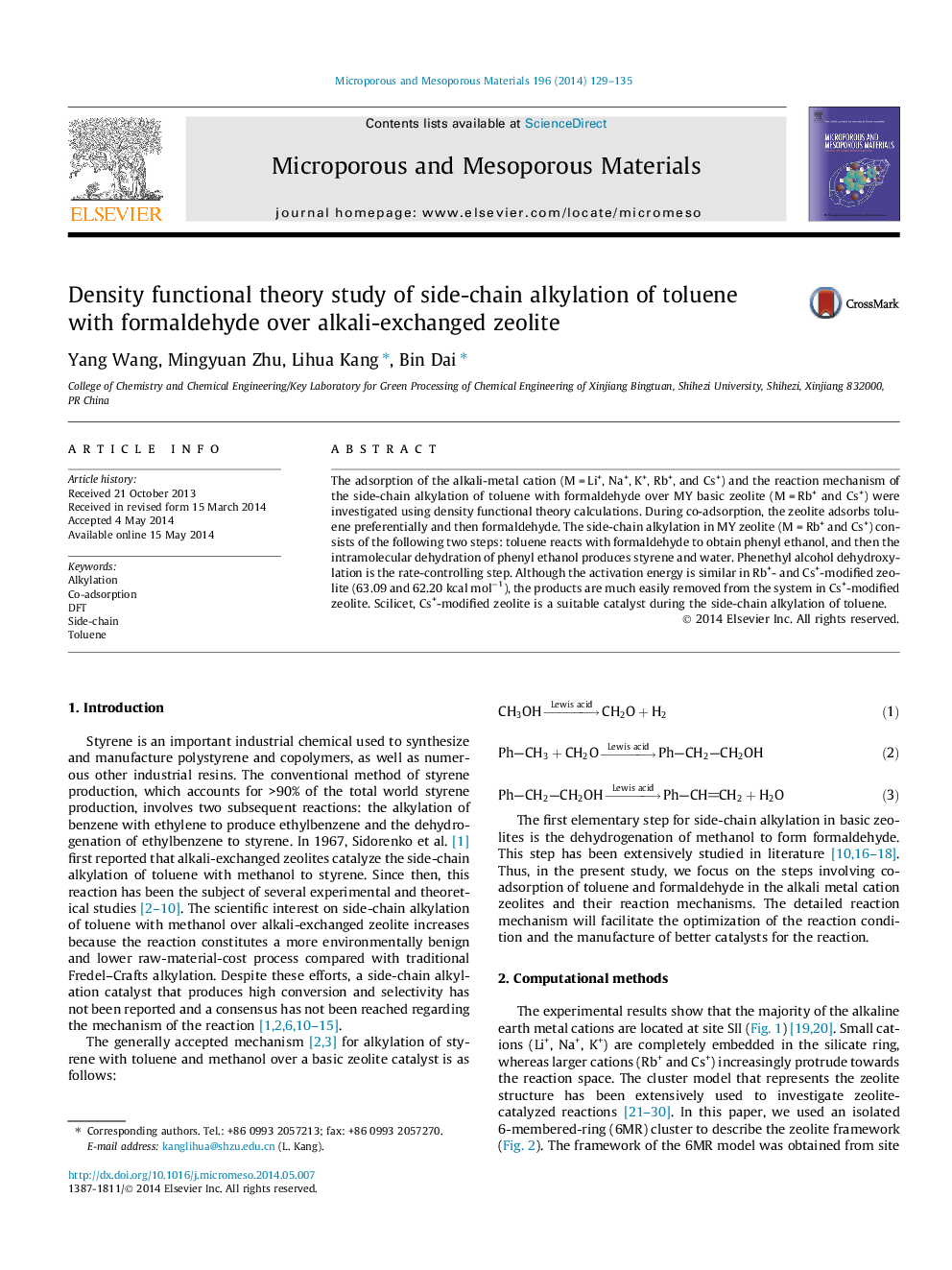| Article ID | Journal | Published Year | Pages | File Type |
|---|---|---|---|---|
| 72997 | Microporous and Mesoporous Materials | 2014 | 7 Pages |
•Systemic study using different alkali metals modified zeolite.•Adsorption, co-adsorption, reaction mechanism and energy path were investigated.•Compared two different methods of co-adsorption.•The BSSE corrections and van der Waals interaction calculations were considered.
The adsorption of the alkali-metal cation (M = Li+, Na+, K+, Rb+, and Cs+) and the reaction mechanism of the side-chain alkylation of toluene with formaldehyde over MY basic zeolite (M = Rb+ and Cs+) were investigated using density functional theory calculations. During co-adsorption, the zeolite adsorbs toluene preferentially and then formaldehyde. The side-chain alkylation in MY zeolite (M = Rb+ and Cs+) consists of the following two steps: toluene reacts with formaldehyde to obtain phenyl ethanol, and then the intramolecular dehydration of phenyl ethanol produces styrene and water. Phenethyl alcohol dehydroxylation is the rate-controlling step. Although the activation energy is similar in Rb+- and Cs+-modified zeolite (63.09 and 62.20 kcal mol−1), the products are much easily removed from the system in Cs+-modified zeolite. Scilicet, Cs+-modified zeolite is a suitable catalyst during the side-chain alkylation of toluene.
Graphical abstractFigure optionsDownload full-size imageDownload as PowerPoint slide
